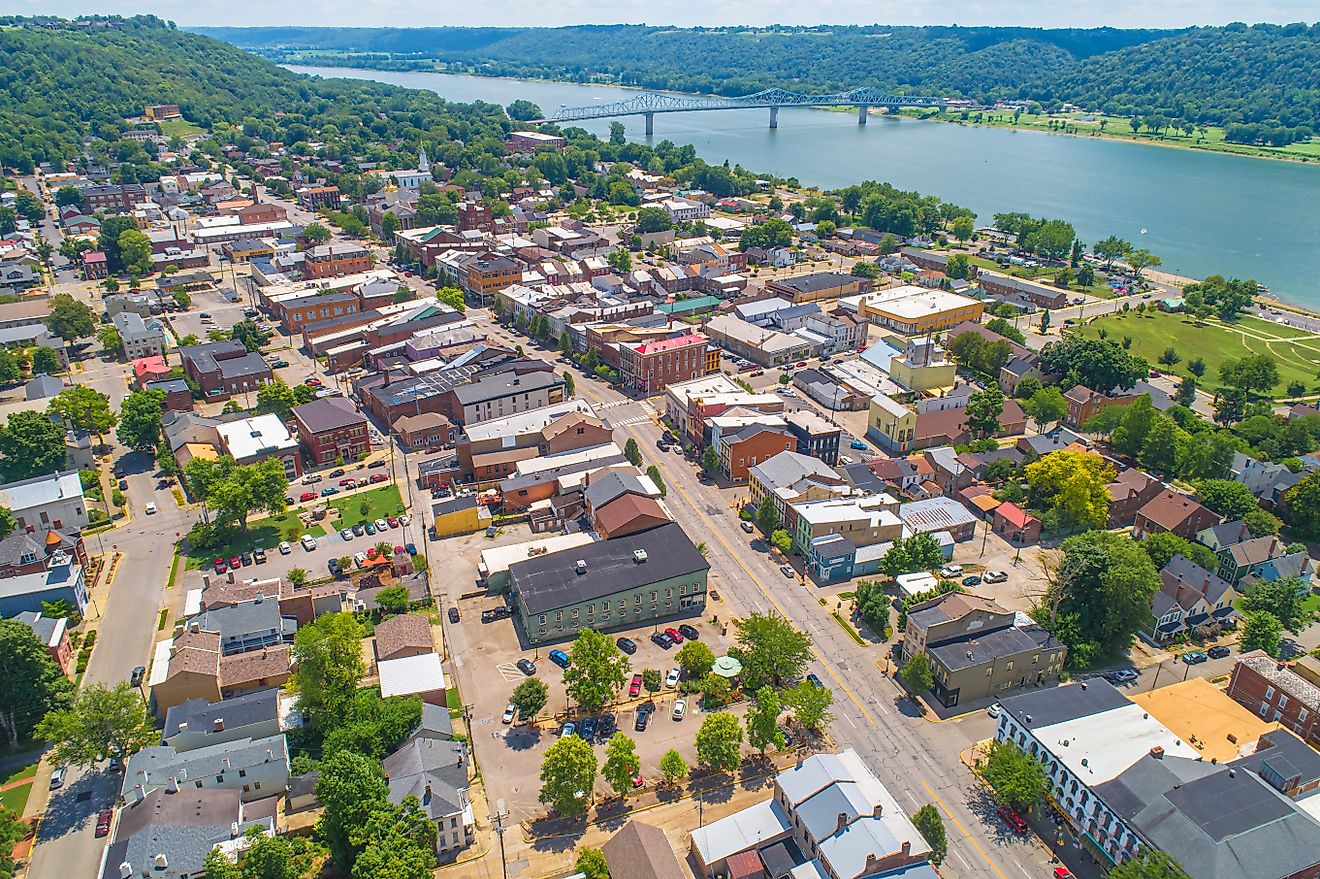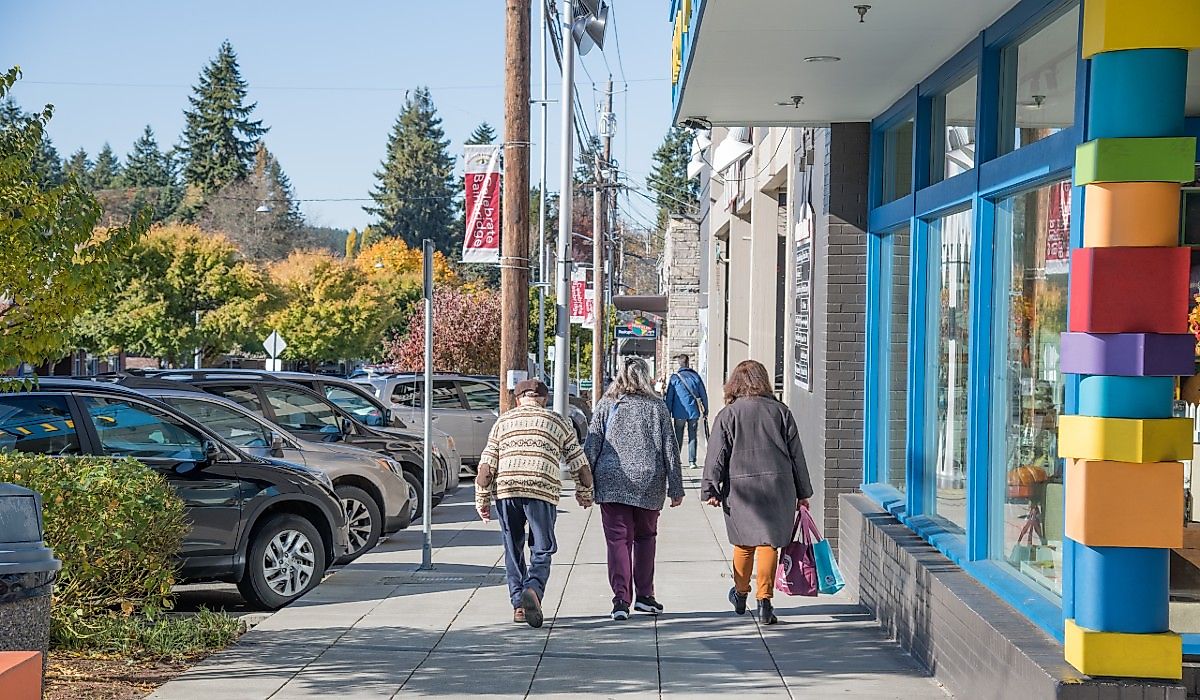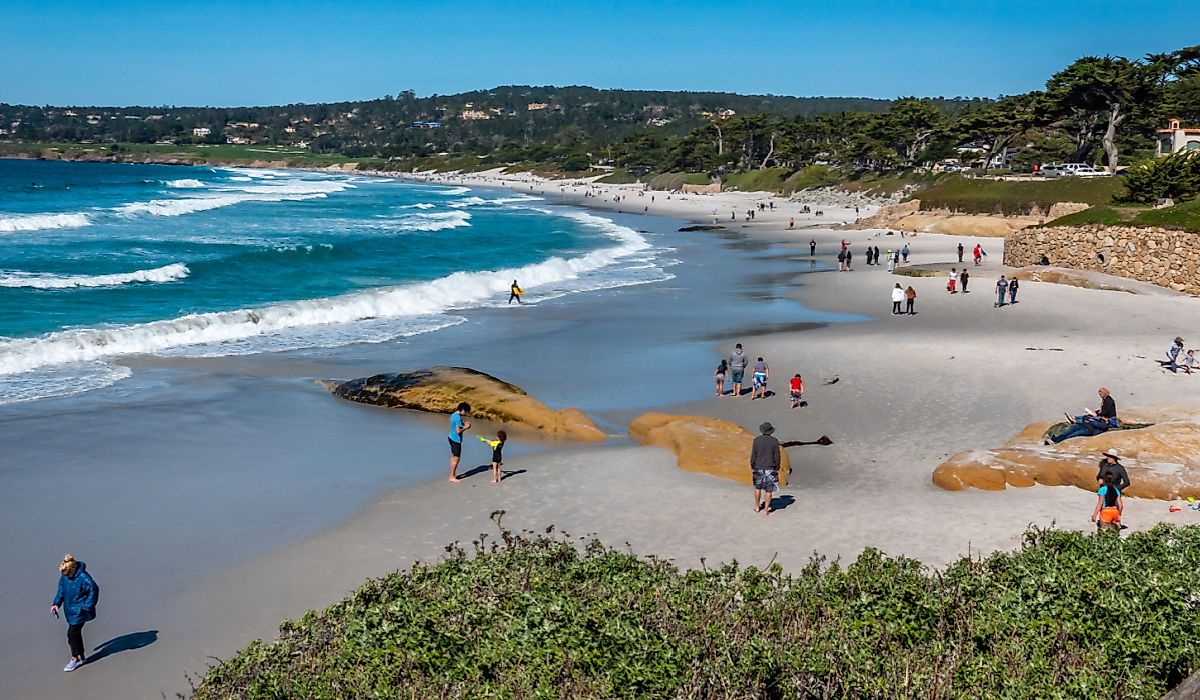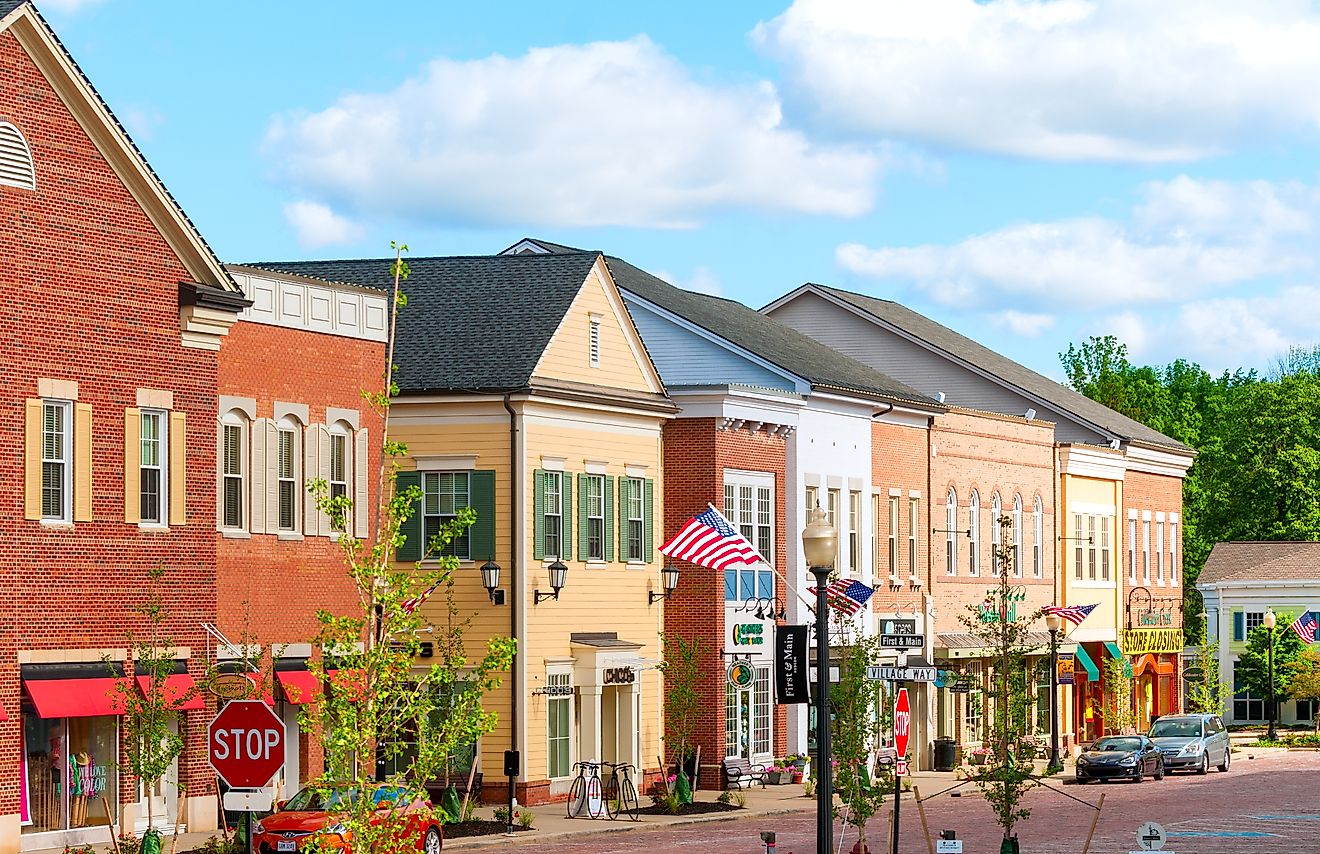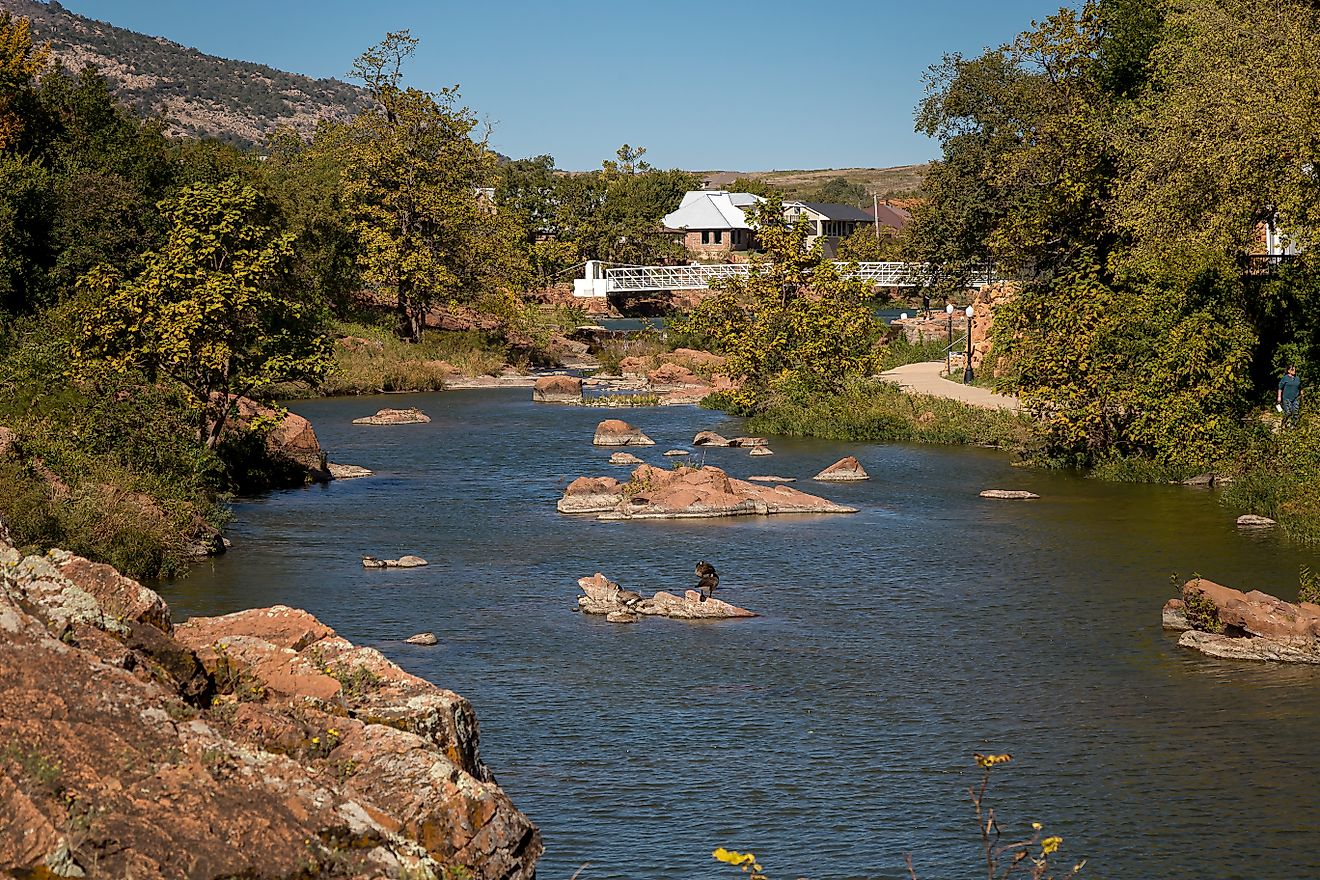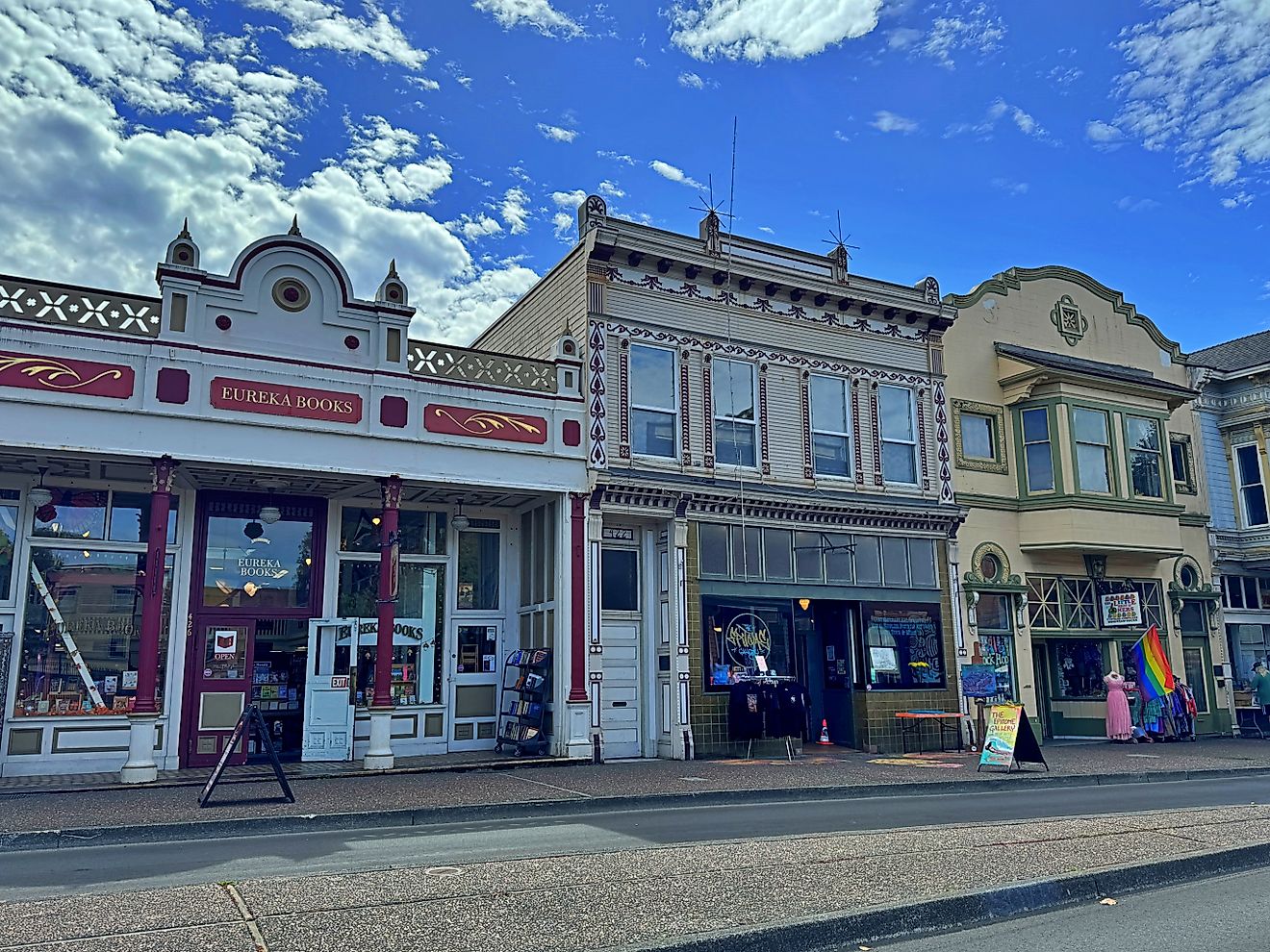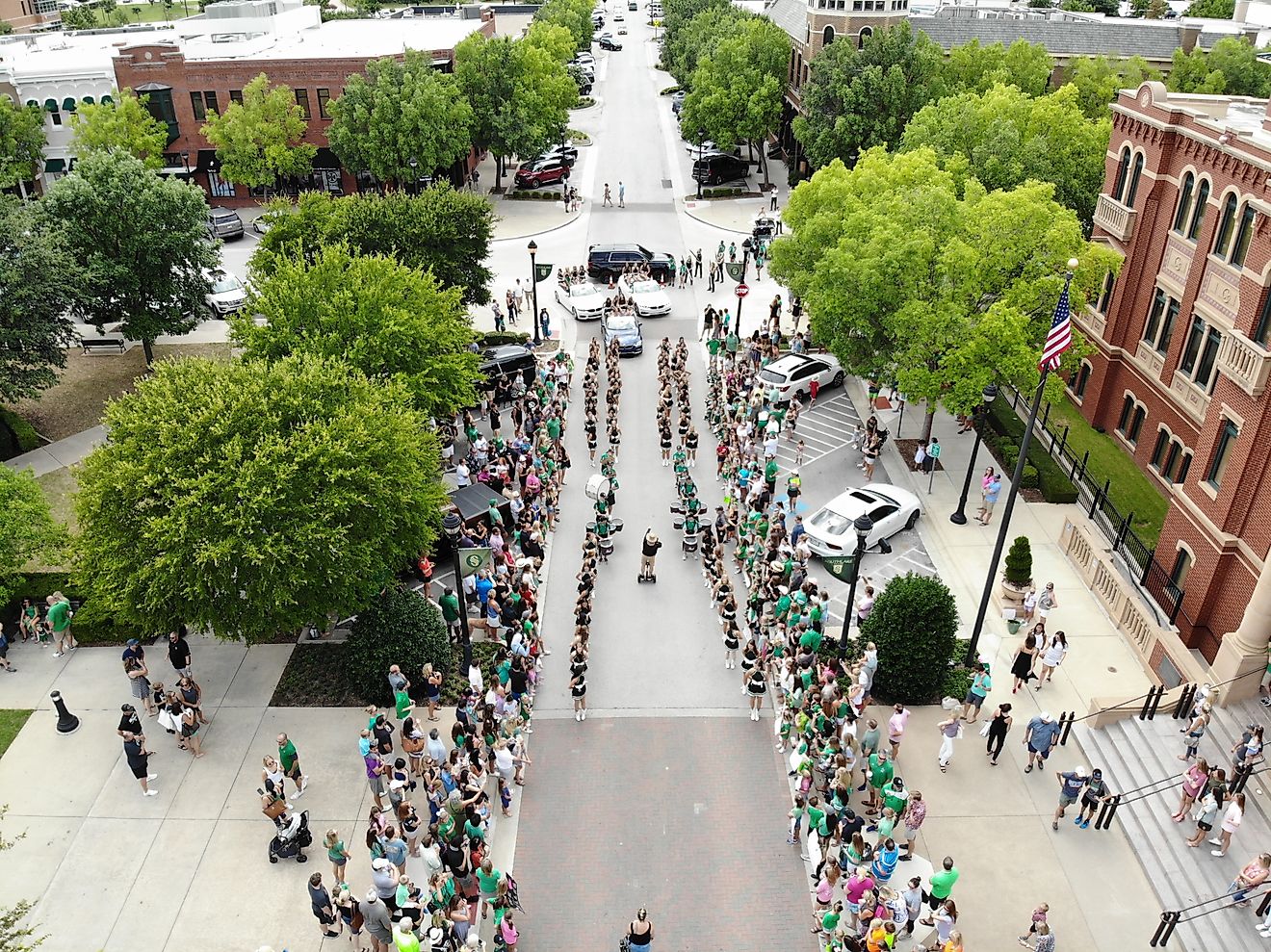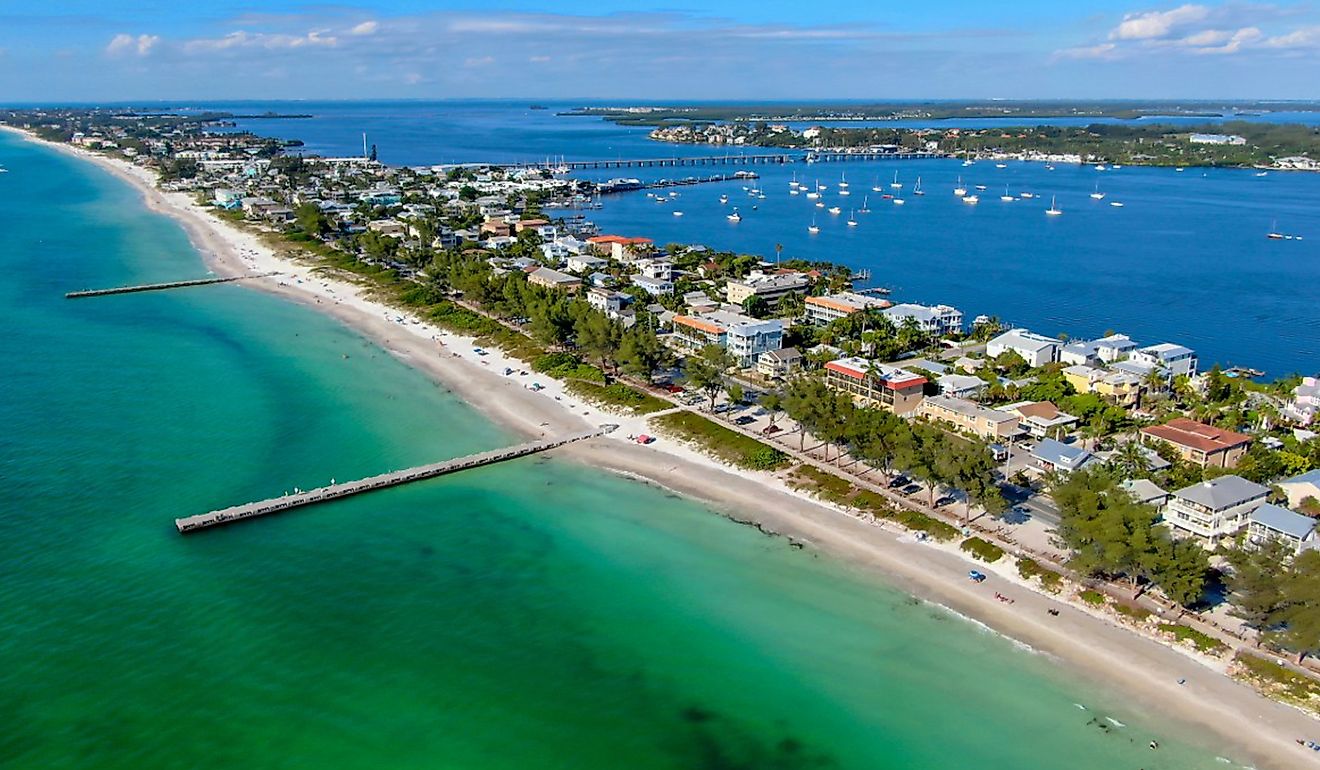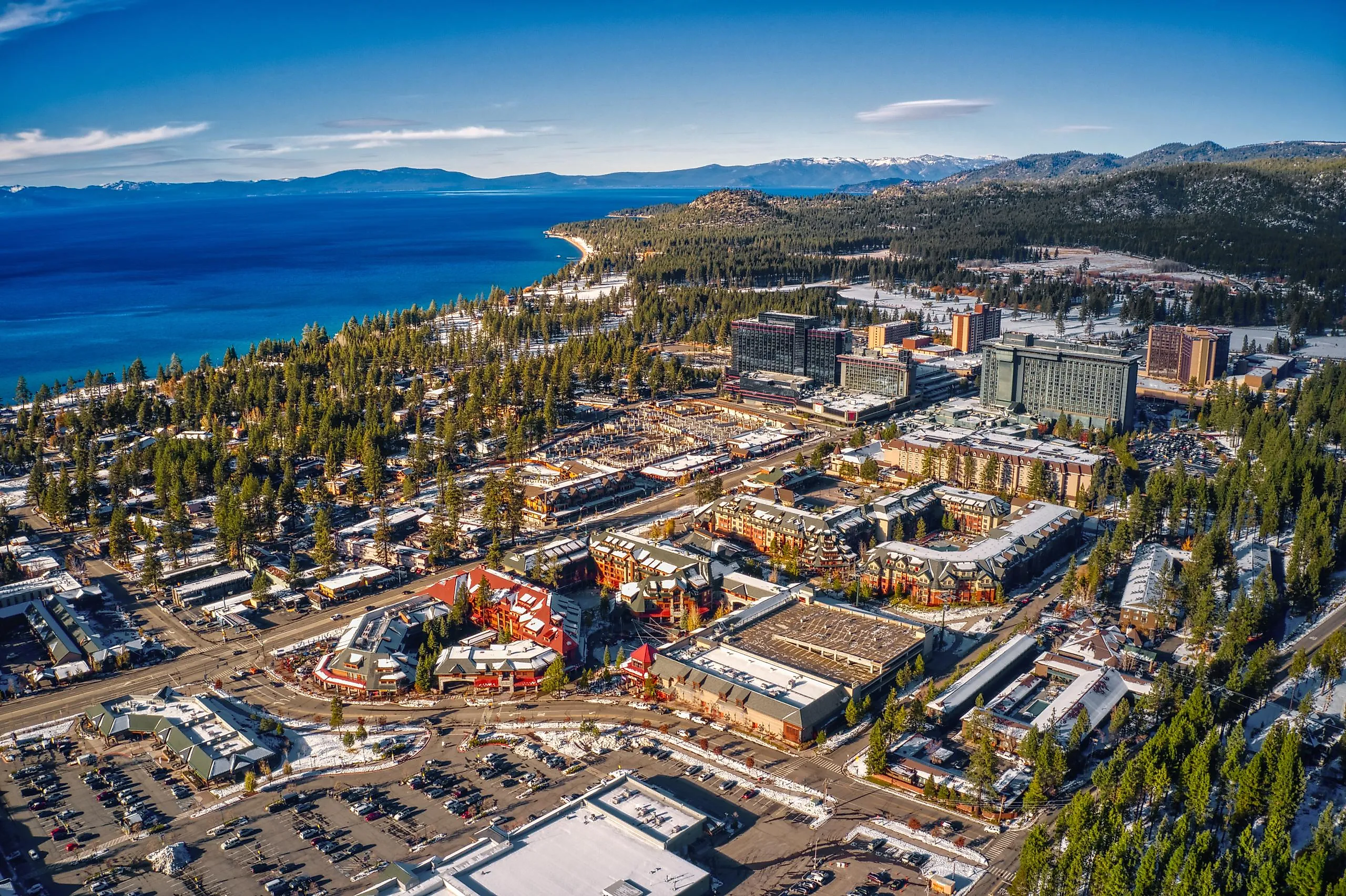
11 Stress-Free Towns in California's Sierra Nevada For A Weekend Retreat
The heartbeat of the Pacific Coast, California is known for Hollywood’s luxuries and the inventive spirit of the San Francisco Bay Area. Yet, as the third-largest state, it holds plenty within its vast eastern half, particularly the Sierra Nevada region. Here, memories of the Gold Rush linger in timeworn settlements, open valleys, and towns that once shaped the Old West. From the burning Mojave Desert and Death Valley to cold mountaintops, gigantic alkaline lakes, and endless forests, they reveal a different side of the Golden State, encouraging you to stop stressing out and simply breathe. What begins in the Cascade Range’s volcanic reaches in northern California unfolds into storied communities that sustain their own rhythm of life. A weekend retreat in these stress-free Sierra Nevada towns lets everyone, from intellectuals and spiritualists to artists and adventurers, set aside their tensions and awaken their minds amid an abundance that few places can match.
Mariposa

Mariposa invites visitors to step back from daily fragments and see the full canvas, where Gold Rush heritage and mountain creativity form something larger than its parts. The California State Mining & Mineral Museum preserves over 13,000 specimens, including the Fricot Nugget and a 13-pound crystallized gold specimen from the American River. It also carries Benitoite gemstones, found nowhere else but in California, Arkansas, and Japan, as well as glow-in-the-dark minerals. Mariposa Museum and History Center recounts Gold Rush history, Native American artifacts, and Yosemite Valley settlement through pioneer equipment and photographs from the Old West.
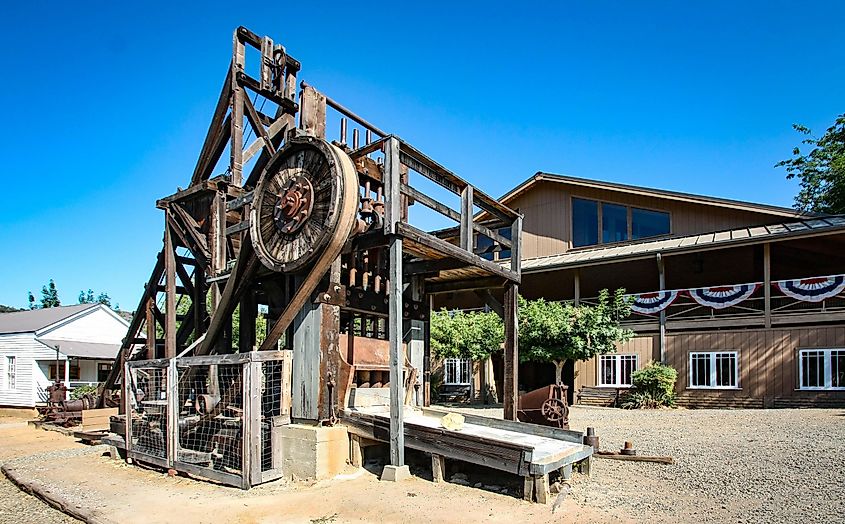
Sierra Artists Gallery showcases local painters, sculptors, and jewelers whose work reflects mountain life and natural beauty. Meanwhile, Mariposa County Arts Park hosts outdoor performances, sculpture installations, and community festivals under open skies. Mariposa Hotel Inn welcomes overnight guests into a building from 1901, which still recalls the Old West's historical lineup of saloons and horses.
Sonora

Sonora struck gold in the truest sense when Mexican miners from Sonora, Mexico, founded their camp here during the frenzied days that reshaped California. The Queen of the Southern Mines, as locals call it, became one of the rowdiest and richest camps where fortunes changed hands overnight and violence ruled the streets until law arrived. The Tuolumne County Museum, inside the old jail, now fills cells with mining equipment, Gold Rush artifacts, and Native American history that reminisce about how thousands poured into these hills while chasing gold. The Sonora Fire Museum preserves vintage firefighting equipment and recounts battles against wildfires that still threaten the town each dry season.
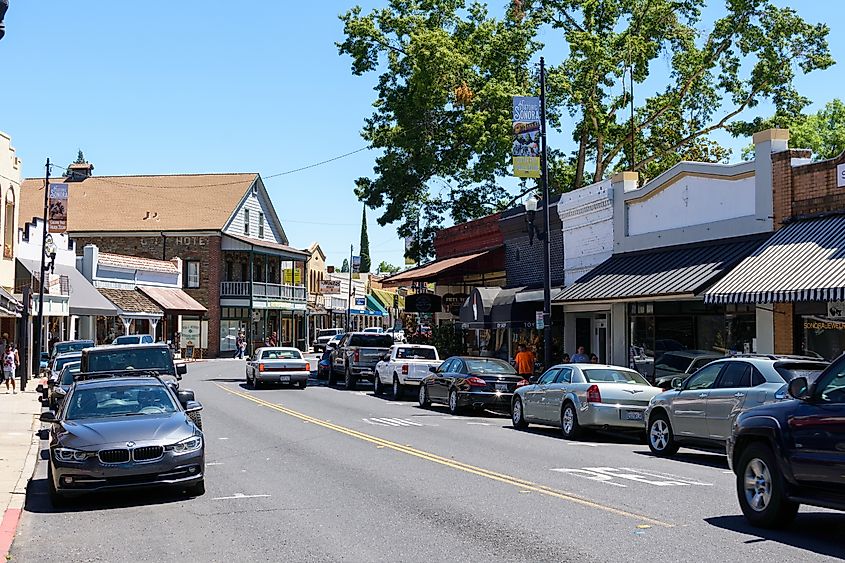
East into Stanislaus National Forest, Pinecrest Lake reflects the surrounding peaks, where the four-mile Pinecrest National Recreation Trail loops the reservoir past swimming beaches and fishing piers regularly stocked with rainbow trout. The Trail of the Gargoyles walks you through volcanic rock formations eroded into strange shapes along cliff edges, creating a lovely escape for travelers. Catfish Lake, meanwhile, rewards hikers who climb beyond Pinecrest into the Waterhouse Roadless Area. The Sonora Inn retains its Victorian allure, preserving memories of the days when it first opened as the Hotel Victoria. Guests here can enjoy rooftop pool views overlooking the Sierra Nevada. Some rooms even once hosted Grace Kelly during Hollywood's golden age of filming in Gold Country.
Alturas

Alturas lingers as the nearest community when exploring Goose Lake from its southern approach, making it the gateway to California's share of this vast lake that straddles the Oregon border. Thirty miles north, the alkaline lake rewards those who make the drive with kayaking, canoeing, and chasing Goose Lake redband trout, a species found exclusively in the Goose Lake Valley section of the Shasta Cascade region. Migratory waterfowl flood the shorelines each spring and summer, while mule deer wander through camp areas at dawn and dusk. To make matters more interesting, Modoc National Forest wraps around the town in every direction, where obsidian beds attract rockhounds and Warner Mountains push above eight thousand feet.
Downtown, the Nevada-California-Oregon Railway Building recalls when trains connected this remote valley to the outside world. The Modoc County Courthouse keeps flaunting its Classical Revival columns and a clock tower that has governed since the county's founding. The Niles Theater on Main operates as a local cinema where first-run films play under its vintage marquee. Hotel Niles welcomes guests into its restored grandeur, dating back to when construction began in 1908, featuring tin ceilings, original wooden floors, a Victorian saloon, and the first elevator to be installed in the county.
South Lake Tahoe
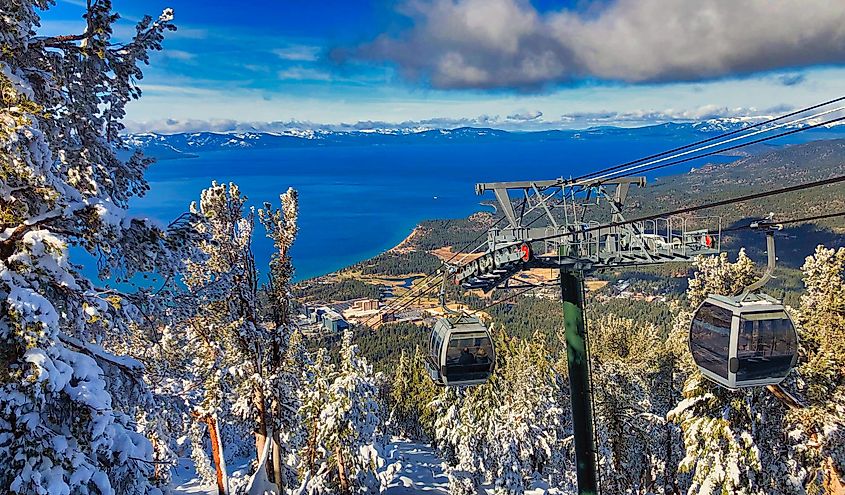
It hardly overreaches to suggest that among the towns surrounding the eponymous lake, South Lake Tahoe reigns paramount as a resort city. A soothing destination, Lake Tahoe itself is a hotbed for kayaking, paddleboarding, and swimming from multiple marinas and beaches along the southern shore, where the water clarity allows visibility 30 feet down on calm days. Upper Truckee Marsh filters snowmelt through hundreds of acres of wetlands that provide habitat for bald eagles, ospreys, willow flycatchers, and migratory waterfowl traveling international flyways. In the meantime, walking trails are always there to accompany you, threading through restored channels where beavers and mule deer wander at dawn.
Fireside Lodge welcomes guests into log cabin quarters with river-rock fireplaces, kitchenettes, and outdoor barbecue areas where s'mores roast over fire pits after happy-hour wine and cheese. Hotel Azure Tahoe on the waterfront provides another luxurious alternative with lake-view rooms, private beach access, and a heated pool where mountains reflect in still water. Just west, Heavenly Mountain Resort delivers not just stress relief but opportunities to blow off steam entirely, whether skiing and snowboarding down 4,000 vertical feet in winter or mountain biking and zip-lining through summer months.
Ridgecrest

Ridgecrest contrasts sharply with the cold mountains of northern Sierra Nevada, trading pine forests for Mojave Desert heat, where summer temperatures climb past 100 degrees and rainfall averages less than five inches annually. California Welcome Center orients visitors to regional attractions, desert ecology, and military history while providing maps, brochures, and advice on navigating Death Valley, the Trona Pinnacles, and surrounding wilderness areas. There is no shortage of well-established lodgings either, with SpringHill Suites by Marriott offering suites with separate living areas, an indoor pool, and a fitness center.
Maturango Museum documents both the natural and cultural history of the Upper Mojave Desert through plant and animal displays, Native American artifacts, geology exhibits, and contemporary crafts. Nevertheless, the place's most sought-after experience must be the guided tours into Little Petroglyph Canyon on China Lake Naval Air Weapons Station, where the Coso People carved over 20,000 petroglyphs of bighorn sheep, deer, and antelope into canyon walls millennia ago. The Navy base itself employs thousands and tests weapons systems across a million-acre range that makes Ridgecrest a company town.
Lone Pine
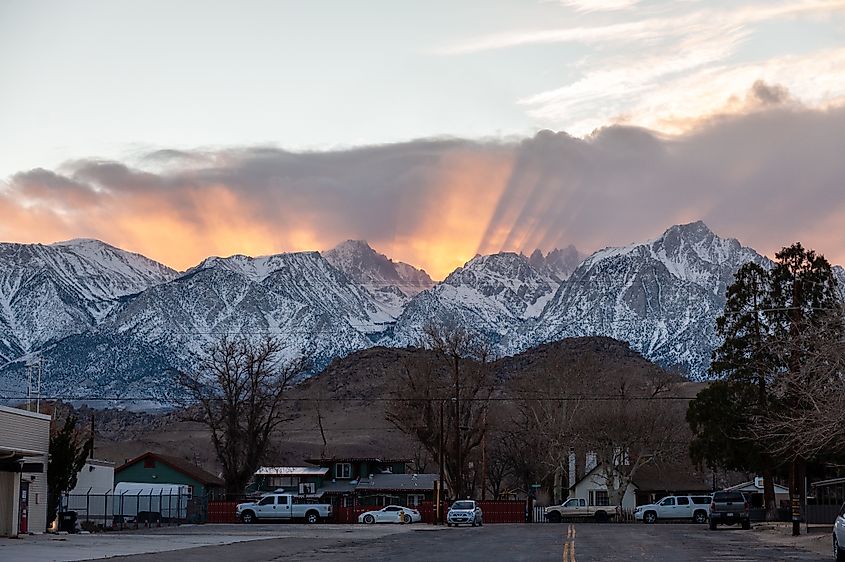
Lone Pine emerges where the Great Basin Desert begins, a gateway town to Mount Whitney that recalls the American West of a bygone era. The 14,000-foot peak towers above the valley floor, where climbers once stopped for water before chasing the altitude that still calls thousands annually. Movie Road meanders through the Alabama Hills National Scenic Area, passing rounded granite boulders and natural arches like Boot Arch and Mobius Arch. These landmarks have been featured in over 400 films since the Silent Era, including Gunga Din, How the West Was Won, Gladiator, Django Unchained, and Iron Man. The Museum of Western Film History documents its cinematic legacy through set pieces, costumes, and movie props, such as the Graboid monster from Tremors, in addition to occasional weekend film screenings.
California Historical Landmark #507 marks the gravesite of the 1872 Lone Pine Earthquake victims, a solemn reminder of the tragic event where a magnitude eight earthquake caused multiple fatalities and demolished most of the buildings in minutes. Diaz Lake, south of town, is an oasis in this region, where you can shed stress via fishing, boating, and swimming while the reservoir cools summer afternoons. Best Western Frontier Motel welcomes guests with views of Alabama Hills from room windows and walking-distance access to downtown restaurants, shops, and the film museum.
Susanville

Susanville sheds stress through its high-desert isolation and four-season accessibility, where, while winter snow rarely accumulates in town, nearby mountains fill with powder for cross-country skiing and snowmobiling. It defies easy categorization, as the Sierra Nevada, Cascade Range, Modoc Plateau, and Great Basin Desert converge to form terrains that shift from pine forests to sagebrush flats. The Bizz Johnson National Recreation Trail begins at the historic Susanville Railroad Depot downtown and weaves about 25 miles through Susan River Canyon, crossing bridges and trestles and passing through tunnels along smooth gravel. Susanville Ranch Park wraps 1,100 acres of sun-kissed foothills with miles of pathways that call you out for hiking. These also include at least 29 miles of single-track built for mountain bikers who prefer challenging climbs and technical descents. Eagle Lake, one of California's largest natural lakes, is home to Eagle Lake Rainbow Trout that live nowhere else on Earth in the alkaline waters.
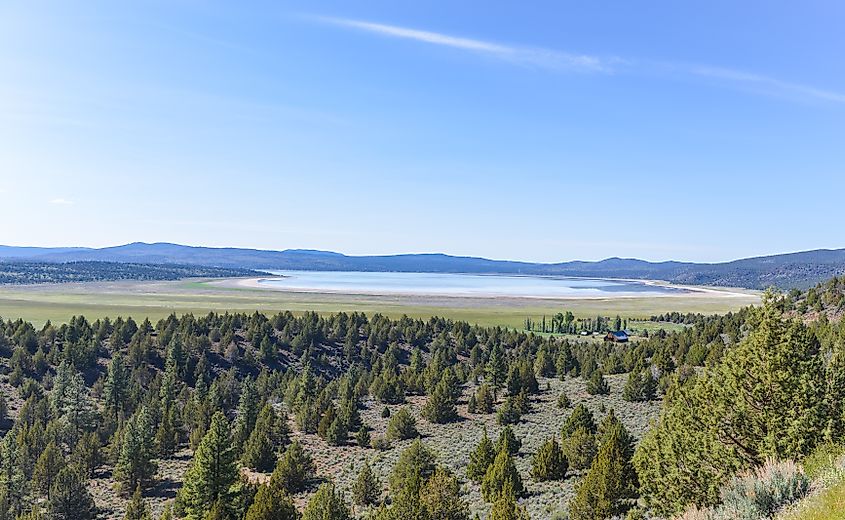
Susanville's Historic Uptown is, in itself, a soothing sight for sore eyes, retaining architectural details from the logging and railroad eras, with locally owned cafes, bookshops, and small businesses lining the sidewalks. The Lassen Historical Museum at 115 North Weatherlow preserves photos, arrowheads, antique weapons, Civil War relics, and household furnishings belonging to the Honey Lake Valley's pioneer days. Next door, Roop's Fort, the oldest structure in Susanville, keeps alive memories of 1854, when Isaac Roop built his one-story log trading post for emigrants traveling the Nobles Emigrant Trail.
Lee Vining

Lee Vining gathers around Mono Lake, where tufa towers rise like calcified cathedrals from waters that shimmer turquoise under Sierra skies. Exquisite enough to make worries evaporate, Navy Beach launches kayakers and paddlers toward Paoha Island, a volcanic mound exhaling steam from hot springs more than two centuries after emerging from the lake floor. Mono Lake County Park welcomes families with picnic tables and a boardwalk that leads through wetlands where migratory birds pause by the millions each spring and fall, filling skies with wings and calls. The Mono Basin Scenic Area Visitor Center explains how freshwater springs and alkaline lake water interacted over millennia to build the limestone spires that now define Mono Lake's otherworldly appearance.
Not far south, Grant Lake reflects mountain peaks from the June Lake Loop, while Parker Lake Trailhead begins the four-mile round-trip hike through aspen groves and pine forests. The Upside Down House, created by silent-film actress Nellie Bly O'Bryan in the 1950s, rests at the Mono Basin Historical Society Museum. The quirky interior features furniture, pots, pans, and even the dedication plaque nailed to the ceiling. Mono Lake Tufa State Natural Reserve safeguards the most concentrated tufa formations along South Tufa, where a mile-long interpretive trail loops through calcium carbonate spires that tower 30 feet above the shoreline. Murphey’s Motel welcomes guests along Highway 395, its windows unveiling mountain views and its affordable rooms placing visitors near the Tioga Pass entrance to Yosemite National Park.
Lake Isabella
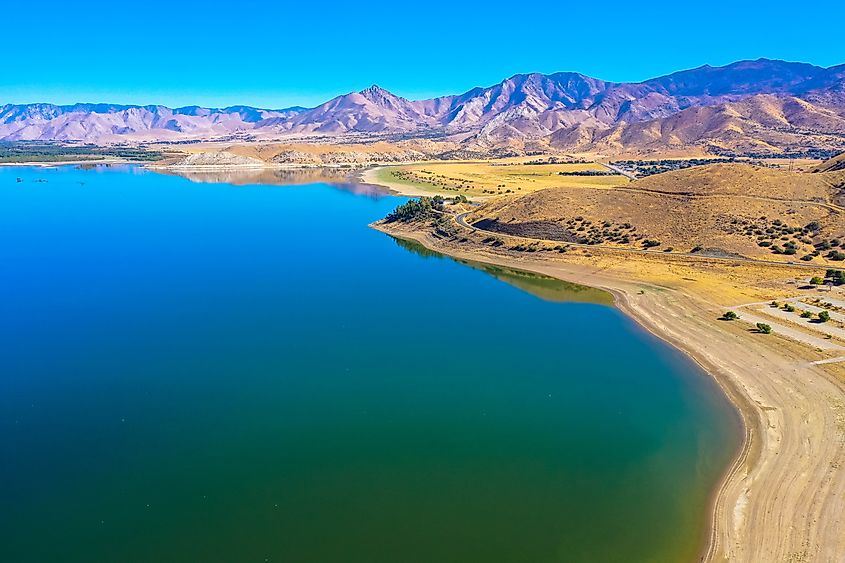
Lake Isabella fills the valley where fishing for bass, catfish, crappie, and trout pulls year-round visitors who launch from marinas or cast from shoreline coves. Isabella Peak Trail climbs from French Gulch Campground to 360-degree views where the lake glints below and mountains encircle the basin. Nearby hot springs bubble from hillsides along the Kern River Canyon, where visitors soak in natural pools before diving into the cold river. In the unincorporated community of Bodfish itself, Silver City Ghost Town recreates a composite mining settlement with over twenty authentic buildings dating from 1858, rescued from abandoned camps like Keyesville and Whiskey Flat before they crumbled into dust. Paradise Cove Lodge welcomes guests along the lake's southern shore with waterfront rooms and direct access to swimming beaches and boat docks.
Bishop

Bishop stretches along the eastern slope of the Sierra Nevada, where the Owens Valley drops between 14,000-foot peaks on both sides, creating one of the deepest valleys in the nation. Laws Railroad Museum & Historical Site preserves the narrow-gauge railroad depot from 1883, along with over forty relocated buildings. Together, they recreate the village that once thrived when the Slim Princess steam locomotive hauled ore and passengers between Carson City and Keeler until 1960. Owens Valley Paiute-Shoshone Cultural Center documents tribal history, traditional basketry, and the forced relocations that followed the Owens Valley Indian War through artifacts, photographs, and oral histories passed down through generations.
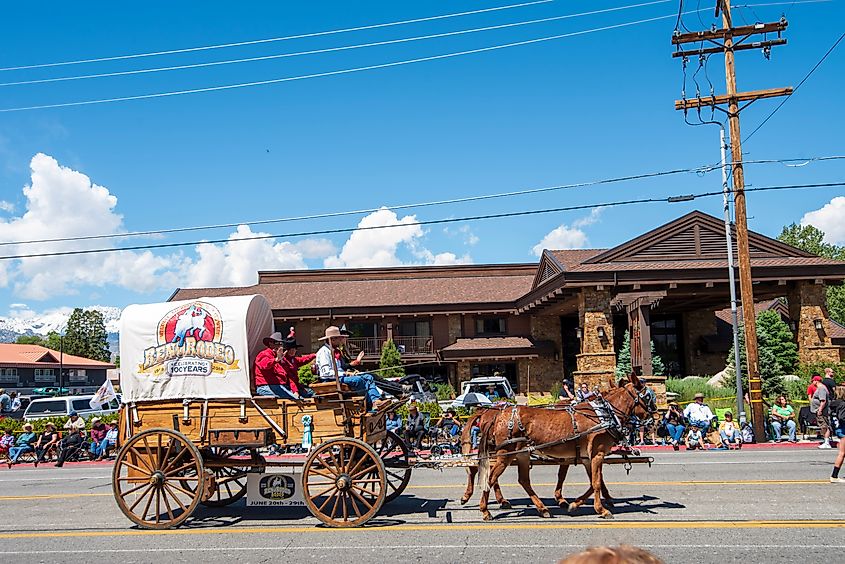
Multiple motel franchises line Main Street, though Cielo Hotel Bishop-Mammoth, an Ascend Collection Hotel, distinguishes itself with modern rooms, complimentary breakfast, and proximity to downtown restaurants and outfitters. East into the White Mountains, Patriarch Grove in the Ancient Bristlecone Pine Forest shelters trees over 4,000 years old, their gnarled trunks twisted by wind across high desert slopes where Gothic-like formations emerge from volcanic soil at 11,000 feet elevation.
Nevada City
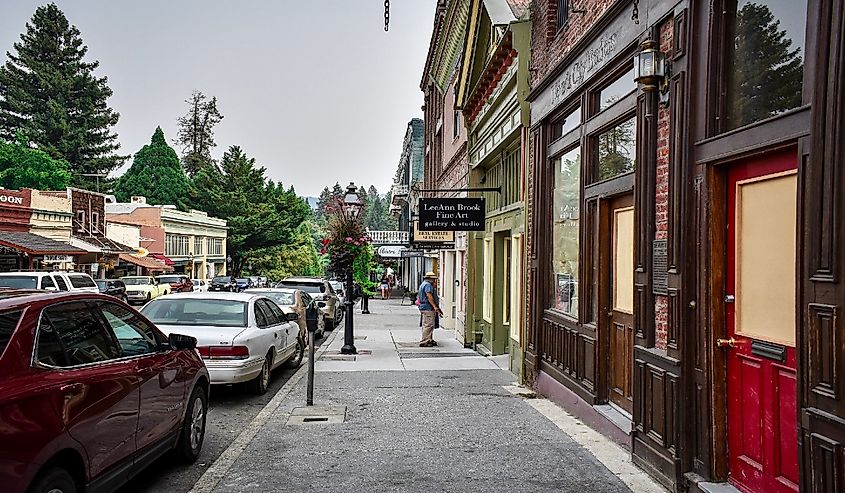
Nevada City serves as the seat of Nevada County, though it carries no moniker borrowed from the neighboring state. Nevada County Narrow Gauge Railroad Museum documents the railroad that connected Nevada City to Grass Valley and beyond from 1874 until its closure during World War II, preserving locomotives, passenger cars, and mining equipment that once moved gold and timber through the Sierra foothills. Nevada Theatre, the oldest continuously operating theater building on the West Coast since 1865, still hosts live performances and community events where Mark Twain once spoke from its stage.
Firehouse No. 1 Museum claims the title of most photographed structure in town with its Victorian architecture and bell tower, while Firehouse No. 2 operates as the active station. Downtown, the National Exchange Hotel at Broad holds distinction as one of the city’s most luxurious accommodations, listed on both the U.S. National Register of Historic Places and the California Historical Landmarks. Built in 1856 from brick masonry, it embodies a recurring architectural lineage across the city, born of an era when successive fires urged residents toward fireproof reconstruction.
The Golden State’s Quiet Ascent to the Sierra
Not too far east of the West Coast, the Sierra Nevada is the Golden State’s underdog, where history and heritage take precedence over luxuries, leaving the door open to slow your pace and ease your mind. Sonora sheds stress through its four-season climate that is never harsh, while Alturas finds calm in high desert isolation and clean air, where winter snow dusts the peaks without burying the valley. On the contrary, Ridgecrest bakes in desert heat under an endless sky, yet the goal is nevertheless attained, and it succeeds in revitalizing your soul. Be it gambling in Bishop or touring Hollywood’s cherished sites around Lone Pine, a weekend in California’s Sierra Nevada remains a perfect recipe to recharge.



